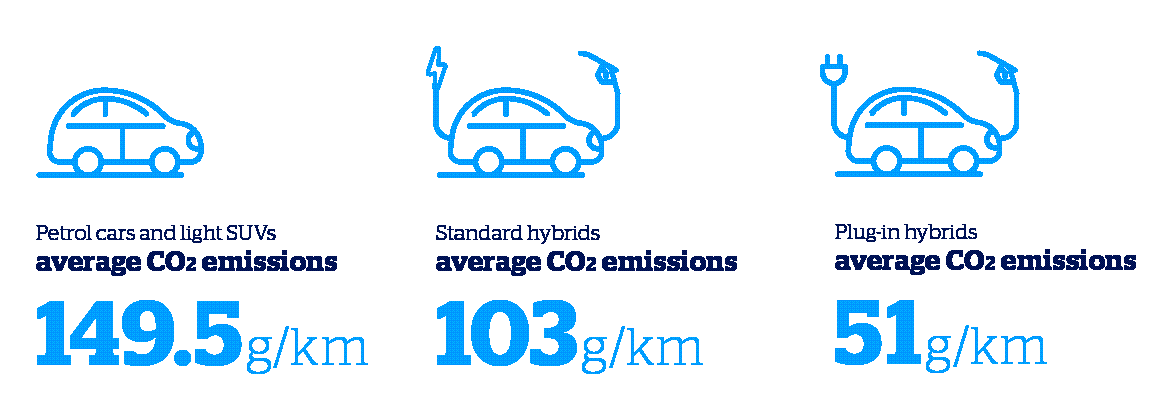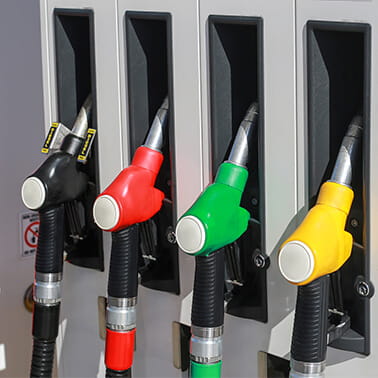Electric cars, hybrid cars and petrol cars: the pros and cons
- For decades, petrol and diesel engines have been the only serious choice – but times are changing
- Hybrid and electric cars are becoming increasingly popular, although they’re generally still more expensive than petrol cars
- Check out our guide to the pros and cons of petrol, diesel, hybrid and electric cars
For years, most mainstream cars have been powered by petrol or diesel. But with increasing awareness of the impact of carbon emissions, combined with evolving electric vehicle (EV) technology, how your next car is powered isn’t as much of a given as it once was.
We take a look under the bonnet to help you make a decision on your next car purchase.

Source: CarsGuide
Petrol and diesel cars
Petrol cars have been on our roads since 1886, when Carl Benz’s three-wheeled car revved up its engine for the first time.1 And it was Mr Benz, in partnership with Mr Mercedes, who gave diesel its production car debut in 1936 with the Mercedes-Benz 260D.2
How many petrol and diesel cars are sold each year?
According to the Australian motor car industry database VFACTS, petrol and diesel cars still account for the majority of new car sales.
In the six months to June 2024, of the 606,670 new vehicles sold in Australia, 272,756 (45%) were petrol and 193,859 (32%) were diesel.3
How much does a new petrol or diesel car cost in Australia?
The average price of a new car in Australia is $37,362.4 Maintenance costs average out at around $1,887 a year in capital cities, and $1,784 per year in regional centres.5

What’s more efficient: petrol or diesel?
Diesel engines were once seen as longer-lasting and more environmentally friendly, due to their lower Co2 emissions6 – as well as offering a more economical and powerful driving experience.
But due to the particle emissions from diesel vehicles, the tables have turned and the future of diesel in mass-market car production is uncertain.7
Diesel can usually offer between 30-40% greater fuel efficiency,8 and while there’s only one form of diesel, there’s a range of petrol types to choose from.
E10 – a blend of regular unleaded fuel and 9-10% ethanol9 – is usually the cheapest, but it’s less efficient than unleaded petrol (ULP). On average, using E10 increases fuel consumption by 3%.10
A number of European cities are in the process of banning diesel and petrol-fuelled vehicles. On 31 December 2024, Stockholm will become the world’s first to ban diesel and petrol vehicles, with a 20-block area becoming a no-go zone for internal combustion engine (ICE) vehicles.11
Is premium petrol worth it?
You’ll usually find premium unleaded petrol 95 and 98 available, too. They are generally more expensive and promoted as more fuel efficient and able to provide a smoother engine performance.12
But if you have the choice, research has shown that in terms of fuel efficiency, regular ULP could be the way to go.13
What’s the future for petrol and diesel cars?
Right now, the availability of petrol and diesel cars in Australia is still high – but as far as the future of petrol and diesel cars is concerned, that’s likely to change over the next decade or so.
The ACT announced a ban on new petrol and diesel car sales from 2035,14 while a 2024 report from the Climate Council recommends all petrol and diesel vehicles should be removed from sale by 2035.15
Hybrid cars
Bridging the gap between petrol/diesel and electric cars are hybrids, which combine a fuel engine with an electric motor.
Hybrid and plug-in hybrids – what’s the difference?
There are two main types of hybrid cars – hybrid and plug-in hybrid. The difference in how they’re powered is that hybrid cars use their petrol engine and electric motor together or independently, while the plug-in only uses its petrol engine as backup.16
The battery pack in a standard hybrid is relatively small, and provides enough power to drive around at speeds of around 40km/h before the engine kicks in.17 The plug-in hybrid, meanwhile, has a larger battery and can offer around 50km of electricity-powered distance.18
How do hybrid cars generate electricity?
The batteries in plug-in hybrids can be charged via a power point at home or at charging stations.19
Non plug-in hybrid cars create their own electricity when accelerating, idling or through regenerative braking,20 which converts kinetic energy back to electrical energy during braking.21
How many hybrid and plug-in hybrid cars are sold in Australia?
According to the car industry database VFACTS, 81,613 hybrid cars and 8,223 plug-in hybrid cars were sold in the six months to June 2024.
That means, of the 606,670 new car sales in those 12 months, 13.45% were hybrids, and almost 1.4% were plug-in hybrids.22
How much does a hybrid car cost?
Hybrid cars are usually more expensive than petrol or diesel cars, primarily due to the battery and electric motor needed on top of the combustion engine.23
How much does a hybrid car cost to maintain?
It may cost more to service and maintain a hybrid car, as there’s both the petrol engine and electric motor to work on. While battery packs are typically guaranteed for eight years, their capacity can diminish over time, and it’s often uneconomical to replace a battery in an older hybrid.24
In terms of running costs, fuel costs are similar. A recent test showed a hybrid car would cost $390 less in fuel per year – driving 15,000km – than a comparable petrol car.25
Emissions from a hybrid car
While hybrid cars still produce emissions, they’re better for the environment than their petrol and diesel counterparts. For example, the average emissions of passenger cars and light SUVs is 149.5g/km, while for hybrids it’s 103g/km, and for plug-ins it’s 51g/km.26
Driving a hybrid car
The driving experience of a hybrid car is similar to a petrol engine. However, there are a few things you can do while driving to get the most from a hybrid car. These include accelerating and braking smoothly and not idling the car in neutral, as this will discharge the battery. When driving, you don’t need to do anything to switch between electricity and petrol – the car does that automatically.27
Hybrid car availability
There’s a good selection of hybrid models available from all of the major brands, including Toyota, Mitsubishi, Lexus, Kia, Honda and Ford.
The future of hybrid cars
Roy Morgan data from 2023 shows that hybrids are increasingly in popularity, with 30% of people who are set to buy a new car in the next four years intending to purchase a hybrid, and around 15% intending to buy a fully electric vehicle.28
Electric cars
While electric cars – propelled by a battery – may seem like the new kid on the block, they’ve been around for almost 200 years, with inventors in Europe creating electric carriages and cars as far back as the 1820s.29
The mass production of Henry Ford’s Model T – at a third of the price of electric cars30 – meant the popularity of electric options waned.
It wasn’t until the early-mid 2000s, thanks to advances in technology and lithium-ion batteries,31 that the electric car renaissance began.
How many electric cars are sold in Australia today?
According to VFACTS, 50,219 electric cars were sold in Australia in the six months to June 2024. That means, of the 606,670 new car sales that month, 8% were electric.32
How do electric cars work?
A battery stores electricity, which is sent to an electric motor and converted into kinetic energy to propel the car.
What are fuel cell electric cars?
Fuel cell electric vehicles use a fuel cell, either instead of, or in combination with, a battery or supercapacitor. They are usually powered by hydrogen and can have a greater range than battery-powered electric cars.33
According to the motor industry database VFACTs, there were no fuel cell electric cars sold in Australia in the six months to June 2024.34
How do you charge an electric car?
You can charge an electric car from any standard power point35 – although that could take up to 24 hours.36 To make electric car ownership viable for everyday drivers, a charging outlet can be installed, which can cut charging times to around four hours.37
Public charging stations are popping up across the country, with standard charging outlets and fast chargers available – fast chargers can charge a car in 40 minutes.38
There are more than 2,000 public charging stations in Australia39, including 840 fast-charging stations.40
Can you convert a petrol or diesel car into electric?
It can be done, particularly for older models that aren’t as complex as more modern cars – however, given the time and costs involved, it’s possibly only really worth considering for classics.41

How much does it cost to buy an electric car?
EVs can be more expensive than petrol and diesel vehicles, primarily due to battery costs.42 Three models account for around 70% of EVs sold in Australia. These are the Tesla Model Y, Tesla Model 3, and BYD Atto 3, with the BYD being the only one available under $50,000.43
There are an increasing number of options in that sub $50,000 price mark, with MG and GWM also offering options at the lower end of the scale.44
At the top end, the Rolls Royce Spectre will set you back $770,000, the BMQ i7 is listed at $306,900 and the Mercedes Benz EQS SUV at $195,900.45 But more than 40 new EV models are due to be available in Australia through the course of 2024,46 so increased competition could see EVs become more affordable.
How much does it cost to run an electric car?
It costs the average Australian driving a petrol or diesel car around $0.20/km, while costs for fuelling an EV come in at $0.04/km. To travel 12,000km per year, it would cost an EV driver $500, in comparison to the $2,500 for a petrol or diesel vehicle.47
How far can electric cars travel in one charge?
Like petrol and diesel cars, it depends on the make and model – and, in the case of electric cars, the battery. For example, at one end of the scale, the Mercedes Benz EQS SUV has a range of 698km, while the Mazda MX-30 BEV has a range of 224km.48
What’s it like to drive an electric car?
Electric cars are quieter, and experts say they have a greater technical performance than petrol or diesel cars. The battery is also in the centre of the car, providing a lower centre of gravity.
With no gears to move through, acceleration is faster, while one of the most noticeable differences comes via regenerative braking, which means lifting your foot from the accelerator will bring the car to a complete stop.49
Do electric cars produce emissions?
Electric cars don’t produce any tailpipe emissions, however, they may produce emissions via tyre, brake and road wear, as well as indirectly through electricity and battery production.50
What is the future of electric cars?
The future seems bright for both electric and hybrid electric vehicles.
In Australia, the public charging infrastructure is growing rapidly, and while more than 80% of charging takes place at home or work, the Electric Vehicle Council believes the vast majority of Australia will have access to public EV charging infrastructure before 2030.51
Together with the ever-expanding range of electric cars available in Australia, the appeal of EVs is certainly growing.
However your car is powered, you’ll want to make sure it’s covered. Check out QBE’s Comprehensive Car Insurance today.
1 Benz Patent Motor Car: The first automobile (1885–1886) | Mercedes-Benz Group
2 1936 Mercedes-Benz 260 D – Drive
3 VFACTS June 2024: Soft finish for record half-year | CarExpert
4 Average car cost in Australia | New Car Costs – Canstar Blue
5 Transport Affordability – AAA – Data Dashboard
6 Petrol or diesel? What should you choose? | RAC WA
7 Petrol vs Diesel: what is the real difference? | Haynes Publishing
8 Petrol or diesel? What should you choose? | RAC WA
9 E10 facts | NSW Government
10 E10 facts | NSW Government
11 EU Commission OKs Stockholm’s new petrol, diesel car-free zone – Euractiv
12 Four Reasons To Consider Premium Unleaded Petrol | Shell Australia
13 How to save money on fuel | RACV
14 Australia news LIVE: Cameron Smith wins British Open 2022; NSW COVID isolation period to be reviewed; RBA interest rate hikes set to continue; COVID pandemic leave restored; Europe fires burn in France; UK heatwave continues (smh.com.au)
15 Seize the decade: How we empower Australian communities and cut climate pollution 75% by 2030 | Climate Council
16 Hybrid vs plug-in hybrid: What's the difference? CarsGuide
17 Are Hybrid Cars Worth It? Pros and Cons | RAC WA
18 Are Hybrid Cars Worth It? Pros and Cons | RAC WA
19 Hybrid vs plug-in hybrid: What's the difference? CarsGuide
20 Hybrid vs plug-in hybrid: What's the difference? CarsGuide
21 Regenerative Braking – an overview | ScienceDirect Topics
22 VFACTS September 2022: Sales rebound, EV share hits new high
23 Cheapest Hybrid Vehicles on Sale in 2024: Deals in the Showroom and at the Pump | MotorTrend
24 Are Hybrid Cars Worth It? Pros and Cons | RAC WA
25 Are hybrids worth the extra money? | Drive
26 Are hybrid cars really better for the environment? | CarsGuide
27 How To Drive a Hybrid Efficiently – even during peak hour | Ken Mills Toyota
28 Over 4.3 million Australians plan to buy a new vehicle in the next four years – with hybrid vehicles up significantly – Roy Morgan Research
29 The History of Electric Vehicles Began in 1830 | ThoughtCo
30 The History of the Electric Car | The Department of Energy
31 The History of Electric Cars | CarsGuide
32 VFACTS June 2024: Soft finish for record half-year | CarExpert
33 Electric vehicles – Australian Renewable Energy Agency (ARENA)
34 VFACTS June 2024: Soft finish for record half-year | CarExpert
35 Electric vehicle information | Green Vehicle Guide
36 How do you charge an electric car at home? | Drive
37 How do you charge an electric car at home? | Drive
38 How do you charge an electric car at home? | Drive
39 The Aussie states with the most public EV chargers | Drive
40 Australian EV fast-charging sites set to double in 2024 – pv magazine International
41 Electric Car Conversion Australia: A DIY Guide to EV Conversions | CarsGuide
42 Are electric vehicles more expensive than petrol/diesel cars? – Electric Vehicle Council
43 EVs are still too expensive for most Australians – so why are some carmakers and the Coalition standing in the way? | Adam Morton | The Guardian
44 What are the 10 cheapest electric cars in Australia? | WhichCar
45 EV Index – AAA – Data Dashboard
46 Best Electric Cars Australia 2024 – 34 New EVs Arriving Soon | CarsGuide
47 Will I save money by owning an electric vehicle in the long run? – Electric Vehicle Council
48 EV Index – AAA – Data Dashboard
49 Why buy an electric vehicle? | Transport for NSW
50 Electric vehicle information | Green Vehicle Guide
51 Is there enough charging infrastructure to support electric vehicles in Australia? – Electric Vehicle Council










